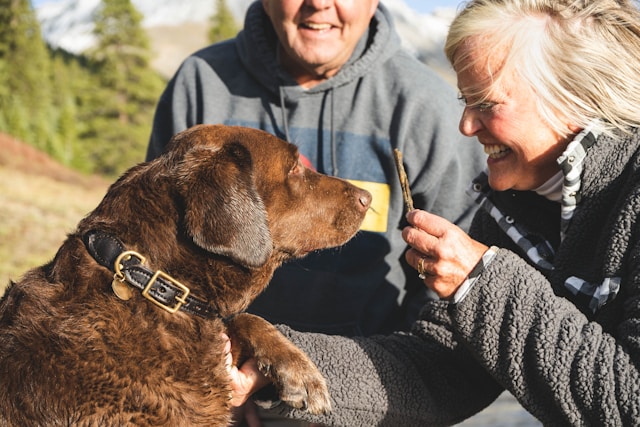Introduction
Separation anxiety is a common issue faced by many pet owners. When pets experience anxiety while their owners are away, it can lead to distressing behaviors like excessive barking, chewing, or even self-harm. Understanding how to help your pet overcome separation anxiety is crucial for their well-being and your peace of mind. This comprehensive guide will walk you through effective strategies and practical tips to ease your pet’s anxiety and build a more comfortable routine for both of you.
Understanding Separation Anxiety
Separation anxiety occurs when pets become excessively distressed when separated from their owners. It’s important to distinguish between separation anxiety and typical discontentment or boredom. Key signs of separation anxiety include:
- Excessive barking or howling
- Destructive behavior like chewing furniture
- House soiling despite being house-trained
- Pacing or restlessness
- Attempts to escape or hide
Separation anxiety can affect both dogs and cats, and while the causes can vary, they often include:
- Changes in routine or environment
- Lack of socialization
- Trauma or abandonment experiences
- Health issues
Strategies to Help Your Pet Overcome Separation Anxiety
1. Gradual Desensitization
Gradual desensitization involves slowly getting your pet used to being alone in small increments. Start by leaving your pet alone for very short periods, and gradually increase the duration. This helps them get used to the idea of you being away without becoming overwhelmed.
Steps:
- Leave your pet alone for just a few minutes.
- Return and reward your pet for staying calm.
- Gradually increase the time you are away.
2. Create a Safe Space
Designate a safe and comfortable area where your pet can feel secure while you’re gone. This space could include their bed, favorite toys, and some comfort items like a piece of your clothing. A cozy, familiar environment can help reduce anxiety.
Steps:
- Set up a specific area with their bed and toys.
- Include items with your scent, like an old shirt.
- Make sure the space is free of distractions and stressors.
3. Use Positive Reinforcement
Encourage positive behavior through rewards and praise. When your pet remains calm during your absence or returns to a relaxed state, reward them with treats or affection. Positive reinforcement helps create a positive association with being alone.
Steps:
- Reward your pet for calm behavior with treats or praise.
- Avoid giving attention when they are anxious.
- Reinforce calm behavior when you return.
4. Implement a Consistent Routine
Consistency helps pets feel more secure. Establish a daily routine for feeding, walks, and playtime. Predictability in their schedule can reduce anxiety as they know what to expect.
Steps:
- Stick to a regular feeding and exercise schedule.
- Maintain consistency in your departure and return times.
- Create a predictable daily routine for your pet.
5. Interactive Toys and Puzzles
Engage your pet with interactive toys and puzzles that keep them occupied. These can provide mental stimulation and distract them from anxiety. Toys that dispense treats or require problem-solving can be particularly effective.
Steps:
- Provide toys that stimulate their mind.
- Use treat-dispensing toys to keep them busy.
- Rotate toys regularly to maintain interest.
6. Consider Training and Behavior Modification
Professional training and behavior modification can be beneficial for severe cases of separation anxiety. A certified dog trainer or behaviorist can provide personalized strategies and techniques to address your pet’s specific needs.
Steps:
- Seek help from a certified trainer or behaviorist.
- Implement their recommended strategies and techniques.
- Monitor progress and adjust as needed.
7. Try Desensitization Products
There are various products available designed to help reduce anxiety in pets. These include pheromone diffusers, calming collars, and anxiety wraps. These products can provide additional support alongside behavioral strategies.
Steps:
- Research and choose desensitization products.
- Follow the manufacturer’s instructions for use.
- Monitor your pet’s response and adjust if necessary.
8. Practice Departures and Arrivals
Avoid making a big fuss when you leave or return home. Keep departures and arrivals low-key to prevent your pet from associating them with anxiety. This helps them remain calm and reduces the intensity of their emotional response.
Steps:
- Practice brief departures and returns.
- Stay calm and composed during these times.
- Avoid long goodbyes or overly enthusiastic greetings.
9. Provide Physical Exercise
Ensure your pet gets enough physical exercise to help expend excess energy. Regular exercise can reduce anxiety and improve overall well-being. Activities like walks, playtime, and agility training can be beneficial.
Steps:
- Incorporate daily exercise into their routine.
- Engage in activities that stimulate both mind and body.
- Adjust the intensity based on your pet’s needs and health.
10. Use Calming Aids and Supplements
Consult your veterinarian about calming aids and supplements that may help manage anxiety. Options like calming treats, herbal remedies, or prescription medications can be useful in severe cases.
Steps:
- Consult with your veterinarian for recommendations.
- Use calming aids and supplements as directed.
- Monitor your pet’s response and discuss any concerns with your vet.
Conclusion
Helping your pet overcome separation anxiety requires patience, consistency, and a multi-faceted approach. By implementing these strategies, you can help your furry friend feel more secure and comfortable when you’re away. Remember to monitor your pet’s progress and adjust your methods as needed. If anxiety persists or worsens, consult a professional for additional guidance.
With the right techniques and support, you can make your pet’s time alone more manageable and foster a happier, healthier relationship with your beloved companion.











Leave a Reply